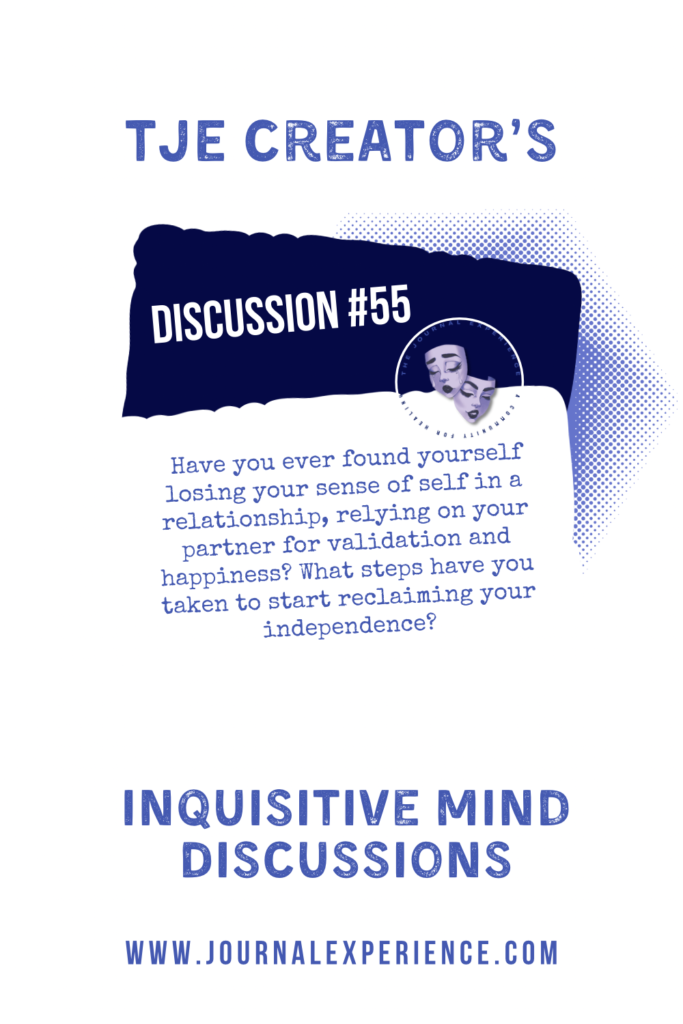Codependency is a frequently misunderstood relationship pattern that involves an excessive emotional reliance on another person, often at the expense of one’s own well-being.

This dynamic affects not only romantic relationships but also friendships, family relationships, and even professional interactions.
Codependent individuals often prioritize their partner’s needs and happiness over their own, struggling with boundaries and self-identity. What might appear as caring behavior can lead to unhealthy dynamics, burnout, and emotional exhaustion.
Breaking codependency is crucial not just for improving relationships but also for fostering personal growth, independence, and self-worth.
This guide explores the signs of codependency and outlines strategies to overcome it. Therapy and support groups play a vital role in helping individuals break free, allowing them to build healthier, more balanced relationships and reclaim their emotional autonomy.
Understanding Codependency
At its core, codependency is an unhealthy emotional attachment where individuals often lose their sense of self in relationships. This pattern typically develops from unresolved emotional needs, often rooted in childhood.
Many people with codependency derive their self-worth from pleasing others, constantly seeking validation through self-sacrifice or over-involvement in others’ lives.
Often, codependency stems from early family dynamics, especially in households where addiction, neglect, or emotional unavailability were present.
For instance, children who take on caregiving roles to maintain family stability may carry these patterns into adult relationships. The constant need to fix or control others can become ingrained in their emotional responses, leaving them feeling drained and emotionally unstable.
Beyond personal experiences, societal norms sometimes reinforce codependent behaviors by promoting self-sacrifice as a virtue. Cultural messages about serving others before oneself can further blur the lines between healthy support and emotional over-reliance.

Recognizing the Signs of Codependency
Codependency manifests in various behaviors that may initially appear selfless but often conceal deeper emotional struggles. Some common signs include:
- People-Pleasing: Codependent individuals go to great lengths to make others happy, often ignoring their own needs in the process.
- Difficulty Saying No: Setting boundaries is challenging for those with codependency, leading to overwhelming feelings and emotional burnout.
- Constant Approval-Seeking: They often seek validation from others, tying their self-worth to how much they can do for others.
- Fear of Abandonment: This fear drives their need for control or excessive accommodation in relationships.
- Neglecting Self-Care: Their focus on others’ needs leaves little room for attending to their physical or emotional well-being.
- Blurry Emotional Boundaries: Codependent individuals often struggle to separate their own emotions from those of their partner, leading to over-identification with others’ feelings.
Recognizing these patterns is the first step toward change. These behaviors may seem caring on the surface but are often rooted in insecurity and an unmet need for approval.
The Impact of Codependency on Relationships
Codependency can have significant consequences for both parties involved in the relationship. Initially, it may feel like intense care and devotion, but over time, the imbalance can erode trust, autonomy, and emotional well-being.
For the codependent partner, the cost is often emotional exhaustion, resentment, and a loss of self-identity. As they focus entirely on another person, they gradually neglect their own goals and desires, which leads to feeling overwhelmed and unappreciated.
For the non-codependent partner, the dynamic can become suffocating. What may begin as care and attention often morphs into excessive control, leading them to feel trapped or manipulated.
In some cases, the non-codependent partner may lose their sense of agency or become emotionally dependent on the codependent individual.
Overall, this imbalance disrupts the mutual respect and autonomy that are essential for healthy relationships. Both parties can end up feeling emotionally drained, misunderstood, or frustrated.
If codependency has left you feeling emotionally depleted or disconnected from yourself, the Healing The Inner Trauma Child (HITCH) Method offers a powerful path to rebuild emotional resilience, reclaim your voice, and heal the patterns rooted in childhood experiences.
Strategies to Break Codependency
Breaking free from codependency requires intentional effort, self-awareness, and support. Here are some actionable steps to help you regain control of your emotional health and relationships:
1. Acknowledge the Problem
The first and most crucial step in overcoming codependency is acknowledging that it exists. Through honest self-reflection and feedback from trusted individuals, you can begin to identify unhealthy patterns and make a conscious decision to change.
2. Set Healthy Boundaries
Learning to set boundaries is critical to breaking codependency. Boundaries allow you to say no without guilt, prioritize your needs, and stop taking responsibility for managing others’ emotions. Healthy boundaries also enable you to protect your emotional well-being while maintaining supportive relationships.
Some ways to start setting boundaries include:
- Defining Your Limits: Identify what behaviors are acceptable and what isn’t in your relationships.
- Communicating Clearly: Express your needs and expectations openly, without fear of conflict or rejection.
- Being Consistent: Enforce your boundaries regularly, even when it feels uncomfortable.
3. Focus on Self-Care
Reclaiming your relationship with yourself is essential to overcoming codependency. This means nurturing your mental, physical, and emotional health, and engaging in activities that bring joy, reduce stress, and foster personal growth.
Some self-care practices include:
- Engaging in Hobbies: Rediscover passions and interests that you may have neglected.
- Mindfulness and Meditation: These practices promote emotional independence and self-awareness.
- Physical Exercise: Regular exercise not only enhances physical health but also boosts mental well-being.
4. Improve Communication Skills
Healthy communication is vital for breaking codependent patterns. Assertive communication allows you to express your needs and desires openly while respecting others’ boundaries.
Learning to communicate without resorting to manipulation or passive-aggressive behavior is key to developing healthy relationship dynamics.
Assertiveness training can help you express your needs confidently and establish more balanced communication patterns.
5. Build Emotional Independence
Codependency thrives on emotional reliance. To break free, it’s essential to cultivate emotional independence by learning how to manage your own feelings without depending on others for validation or comfort.
Ways to foster emotional independence include:
- Mindfulness Practices: Regular mindfulness exercises can help you become more aware of your emotions and lessen the need for external validation.
- Journaling: Writing about your thoughts and experiences helps process emotions independently and track your personal growth.
- Therapeutic Techniques: Therapies like Cognitive Behavioral Therapy (CBT) can teach emotional regulation and encourage healthier coping mechanisms.

Seeking Therapy for Codependency
While self-help strategies are effective, therapy can provide deeper insight and guidance on breaking codependency. A therapist can help identify the root causes of your behaviors, explore emotional triggers, and develop strategies for healthier relationships.
Cognitive Behavioral Therapy (CBT)
CBT focuses on identifying and challenging negative thought patterns that drive codependent behaviors. It promotes the development of healthier coping mechanisms and helps individuals shift their focus from seeking external validation to building their self-worth.
Dialectical Behavior Therapy (DBT)
For individuals who struggle with emotional regulation, DBT offers tools for mindfulness, emotional control, and interpersonal effectiveness—skills that are critical in overcoming codependency.
Support Groups
Support groups like Co-Dependents Anonymous (CoDA) provide a safe space to share experiences and learn from others who are going through similar challenges. These groups foster a sense of community, providing both peer support and practical tools for overcoming codependency.
In addition to therapy, structured self-guided programs like the Codependency Therapy | Self Love Recovery Treatment Program offer step-by-step guidance to break free from emotional dependency patterns and rebuild healthier, independent relationships.
Overview
Breaking codependency is not a quick fix but an ongoing process of self-discovery, emotional growth, and relationship healing. Transitioning from dependence to interdependence involves fostering mutual respect, maintaining personal autonomy, and ensuring that emotional needs are met from within rather than through external validation.
If you’re just beginning to recognize codependent patterns or have struggled with them for a while, seeking professional help and building a strong support system are critical steps on your path to recovery. You’re not alone on this journey, and with consistent effort, you can foster healthier, more balanced relationships that honor both your needs and the needs of those around you.
Understanding where codependent patterns originate is key to true transformation. The Webinar: Origins of Codependency and Pathological Narcissism provides essential insights into how childhood relational wounds evolve—and how to break the cycle.
You are not broken.
You are not too much.
You deserve relationships built on mutual respect, autonomy, and emotional security.

For more insights into personal growth and emotional health, subscribe to The Journal Experience (TJE) Newsletter and become part of a community dedicated to self-care, mindfulness, and building stronger relationships. Start your journey toward reclaiming your independence today!